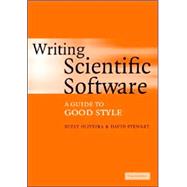
| Part I. Numerical Software: 1. Why numerical software? | |
| 2. Scientific computation and numerical analysis | |
| 3. Priorities | |
| 4. Famous disasters | |
| 5. Exercises | |
| Part II. Developing Software: 6. Basics of computer organization | |
| 7. Software design | |
| 8. Modularity and all that | |
| 9. Data structures | |
| 10. Design for testing and debugging | |
| 11. Exercises | |
| Part III. Efficiency in Time, Efficiency in Memory: 12. Be algorithm aware | |
| 13. Computer architecture and efficiency | |
| 14. Global vs. local optimization | |
| 15. Grabbing memory when you need it | |
| 16. Memory bugs and leaks | |
| Part IV. Tools: 17. Sources of scientific software | |
| 18. Unix tools | |
| 19. Cubic spline function library | |
| 20. Multigrid algorithms | |
| A. Review of vectors and matrices | |
| B. Trademarks | |
| Bibliography | |
| Index. |
The New copy of this book will include any supplemental materials advertised. Please check the title of the book to determine if it should include any access cards, study guides, lab manuals, CDs, etc.
The Used, Rental and eBook copies of this book are not guaranteed to include any supplemental materials. Typically, only the book itself is included. This is true even if the title states it includes any access cards, study guides, lab manuals, CDs, etc.